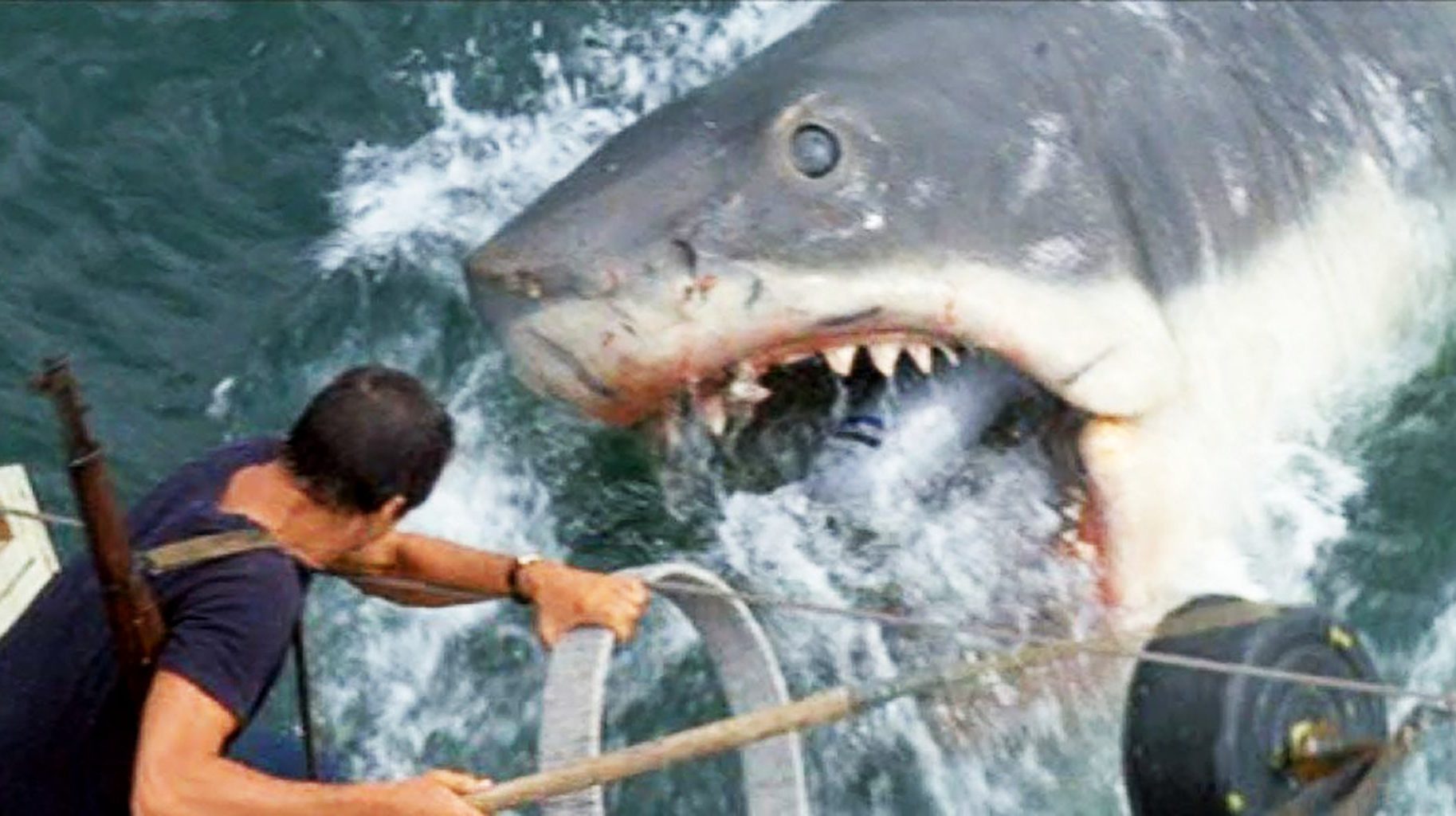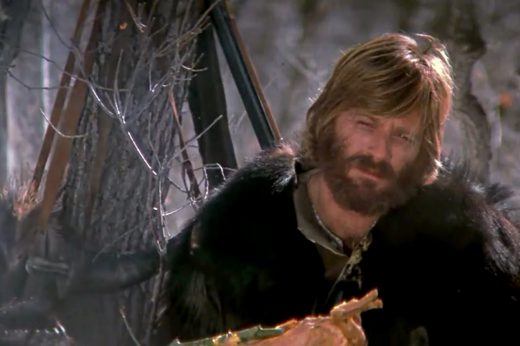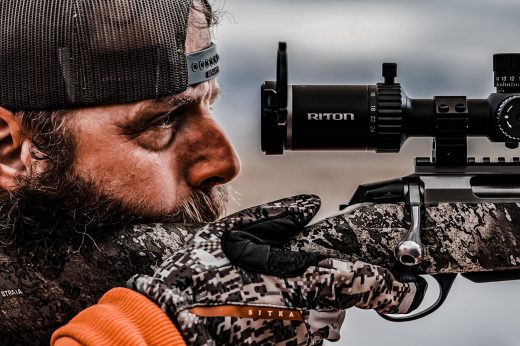In the mid-1970s, few thought a one-word-titled horror-adventure flick from an unknown director would eventually become a staple on “best movies of all time” lists — and it actually doesn’t sound much more believable today. But Jaws (1975) undeniably stands as one of the best and most distinctive films ever made because, somehow, against all odds, it managed to get everything just right.
The big-screen adaptation of the bestselling Peter Benchley novel bearing the same name was Steven Spielberg’s dazzling introduction to the moviegoing public and provided landmark roles for Richard Dreyfuss, Roy Scheider, and Robert Shaw near the conclusion of his storied film career.
It’s a movie that’s famous for a lot of reasons: for its unmistakable score, for an iconic movie poster, for a solid handful of unforgettable bits of dialogue and acting, for being the first “summer blockbuster movie,” and for teaching several generations about the real-life fate of the USS Indianapolis and its crew. It’s also famous for scaring the living shit out of people and legitimately making some afraid to swim in the ocean, lakes, streams, and even backyard pools. And it was unquestionably the largest PR disaster ever to befall sharks.
Why Jaws Is So Damn Scary
The anticipation for this film’s release was huge; after premiering, it stayed in theaters forever. If the industry hadn’t learned what it did from Jaws, the trajectory of films in the ’80s and subsequent decades might have been vastly different — I suppose you can take that as a positive or a negative.
But why did this movie affect people so much? Is it really much more than a typical tale of a monster preying on innocent people, and a few heroes setting out to vanquish said monster? No, it really isn’t. But there’s a reason the format has worked since the time of Beowulf, and Jaws tells this particular story extremely well.
Sure, this film made a lot of people unduly afraid of sharks and the ocean in general, although that fear is not exactly unfounded or imaginary — but it’s close. The average person’s chances of being attacked by any kind of shark in the US is 1 in 11.5 million. The chance of being killed by a shark is 1 in 264 million. So, even if you do go in the ocean, you have a much, much higher chance of being struck by lightning (about 1 in 15,300 over a lifetime) than being attacked by a shark, let alone killed.
None of that really matters, does it? A shark attack is certainly more possible to most people in their right mind than being killed by an alien or some kind of supernatural terror. And Jaws doesn’t depict typical circumstances: If the story weren’t depicting atypical occurrences, there’d be no story to tell. The great white in the movie is abnormally massive (25 feet by Quint’s estimation) and it doesn’t behave like a typical shark — that includes choosing humans as its summer snack choice. But it’s all possible.
The shark is only a bit longer than the biggest great whites ever observed — and if we know anything, it’s that the earth’s vast oceans hold a whole lot of things we humans have yet to see.
That’s part of the reason Jaws is so effective at doing what so many straight horror movies have attempted and failed. The monster is essentially real. It’s not some genetically modified creature or an alien or a supernatural being. It’s a shark. You can go to the aquarium and see one — not one that big, but big enough to terrify children. Watching them effortlessly glide around, it’s extremely easy to imagine them doing so right underneath your dog-paddling feet.
For modern audiences, the shark is just about the perfect monster for this type of story, and Spielberg and Benchley knew it. The voiceover from the film’s original trailer says it best, though the last line goes a tad overboard: “There is a creature alive today who has survived millions of years of evolution, without change, without passion, and without logic. It lives to kill — a mindless eating machine. It will attack and devour … anything. It is as if God created the devil, and gave him … jaws.”
Unrelenting and vicious, it’s a creature dominating an environment where even the most adept humans are little more than defenseless, floundering bits of food — an environment it prowled millennia before humans were even a twinkle in evolution’s eye. Hell, sharks are older than trees — think about that shit.
Cinematically, this shark is unique for its silence. It approaches and attacks without so much as a growl or a roar. Its only herald is a gray dorsal fin slicing through the waves. Like Quint says, it doesn’t even look like it’s alive, until it bites you. The movie hints that this particular shark is a bit more intelligent than it has any right to be, but it doesn’t have an agenda — despite what some of the sequels would have you believe — and it can’t be reasoned with.
All of these aspects are wonderfully and clearly presented to the audience, bit by bit, as they are revealed to Chief Brody (Scheider) and the audience by Hooper (Dreyfuss), Quint (Shaw), and the adventure aboard the Orca. It’s all bolstered by the exceptional performances delivered by a cast of legendary actors, regularly punctuated by moments of surprisingly bloody terror.
The Moments That Really Get You
Jaws is effectively horrifying on another level: It takes idyllic summer days at the beach and nights spent hanging out by the fire, and it stains the surf with the blood of the innocent and masticated.
I grew up in New Jersey and that meant plenty of summer weekends at the shore, which isn’t too far from where Jaws was set and filmed. The feel of Amity Island is deeply reminiscent of many Jersey Shore towns of the era, which is a long way of saying this movie hit me deep as a kid.
The opening scene of the woman being attacked freaked me out for sure, but the guy in the little wooden boat getting eaten in the estuary in front of Brody’s son is forever seared into my mind. There’s this one shot from above when the shark moves in on the man as he clings to his capsized rowboat — it still makes my hair stand up. You see the mouth and eye smoothly emerge from the murky water beneath his feet, and then disappear again as the shark’s mouth closes on his legs.
You don’t actually see the bite, and that’s why it’s so damn scary. A moment later, you see the man’s severed leg sinking to the bottom, and your mind puts it all together. The brief glimpse at the beast’s maw hints at its enormous size, and the idea that something so big, with so many teeth, could be so damn close and you wouldn’t know it — the helplessness of it coupled with the mostly understated gore did something to my child’s brain.
As first envisioned, that sequence would have been even more scarring. After the first bite, the shark was supposed to drag the victim around with his head and shoulders above the surface, kind of like the woman at the beginning. Then, still a little bit alive, he was going to grab Brody’s son in his arms for a little ride while locked in the shark’s teeth, before being dragged under.
I’ll tell you, 9-year-old me is really grateful that the scene was toned down.
It might be low-hanging fruit, but the part where Quint gets eaten fucked me up pretty good, too. I remember seeing it for the first time at a way too young age, and thinking with panic, “It just came onto the boat and ate him. But it’s not supposed to come into the boat.”
Every time I watch that scene, I want to shout for Brody to hold on to him, as if it might go differently this time around. It was the first movie I ever saw where not only one of the main cast but also the toughest, most badass character was killed in such a brutal way, spitting blood and screaming in abject terror.
Jaws Has Aged Very Well
I watch Jaws every year at least once: As I get older, I consistently find something new to admire. Sometimes it’s Robert Shaw’s tremendous performance as Quint. Sometimes it strikes me how great of a protagonist Brody is. I remember on one viewing as a teenager I actually paid close attention to Quint’s speech, looked up the USS Indianapolis, discovered it wasn’t bullshit, and decided it might be the most truly horrifying part of the movie. It also makes his death much, much worse.
There seems to be a nearly inexhaustible supply of details and tidbits about Jaws to discover. A buddy recently told me Quint’s riflelike harpoon gun was a real thing and not just a prop: Sure enough, I found Ian “Gun Jesus” McCallum over at Forgotten Weapons did an in-depth video on Quint’s gun for big fish, the Greener MK II Light Harpoon gun.
It used .38 Special blanks to fire 1-pound darts attached to a line. As depicted in the movie, it was a takedown that indeed came in a green hard case. The Greener MK II manual states users can expect to hit an 8-inch target at 30 meters with accuracy. That means it was designed to go into large fish near the surface and at fairly close range — just like it’s used in the movie.
Most often, I like to simply appreciate the movie’s structure, which is endlessly entertaining and a wonderful template for a great adventure film. Similar to Predator (1987), the third act of Jaws almost feels like a different movie — or more appropriately, it’s the actual story the rest of the movie builds up to tell.
Act 1 introduces some of the characters, the setting, and gradually establishes the stakes as victims are discovered. Act 2 sees Hooper introduced and he and Brody trying to convince the mayor and town leaders to close the beaches. The attack on the Kintner boy draws would-be shark hunters from all over, they catch the wrong fish, and it all culminates with the attack on the Fourth of July.
Then, the film changes course. Quint is fully introduced when Brody hires him; the politics drop away, and the mentally broken mayor and his stupid sport jackets, Brody’s family, and even the town become irrelevant. The beaches are closed, the crowds have fled, and now it’s time for three men to gear up and go after a monster. That becomes the entire focus. There isn’t even a shot of Mrs. Brody back home looking at the horizon full of worry. Her brushed-off radio call is the only reminder of the mainland until we see Brody and Hooper paddling for it in the final shot.
Overall, Jaws is incredibly well paced and well edited — the hunt doesn’t feel truncated or rushed; in fact, it feels episodic and just long enough. The movie’s run time is a bit over two hours but it feels a whole lot longer — in a good way. You feel like you’ve spent time with these characters, and gone through some shit with them.
Improvised Understatement
Regardless of the difficulties faced by Spielberg and the rest of the cast and crew during the filming and editing process, the final product was a damn near perfect adventure film that often drifts into horror.
The movie’s behind-the-scenes troubles are legendary, thanks to a book detailing them that was published when the movie debuted and a few subsequent documentaries. Spielberg, in his youthful zeal, opted to film a movie that mostly takes place on the water on the actual Atlantic Ocean instead of in a tank on a backlot. He soon realized why so many people told him he was nuts. In the end, I’d argue the results were absolutely worth it.
An uncooperative environment and an even more uncooperative mechanical shark named Bruce that was built on an extremely tight deadline meant a lot of shots had to be tweaked or improvised. If Bruce had been more reliable and if the movie had been shot in a controlled environment, the end result might have suffered. Perhaps more time, too much time, would have been dedicated to hunting down the shark. Maybe we would have seen too much of Bruce during the shark attack scenes, enough for you to say to yourself, “Oh that looked fake right there,” losing some of the imagined horror that wound up being so effective. A 65-inch screen and full HD are already making ol’ Bruce look more animatronic than he used to.
Want to see what Jaws would have looked like in the hands of a lousy director and without fate, budgets, and technology adding layers of limitations? Just watch any of the three Jaws sequels, including the 3D one set in SeaWorld, or check out the truly awful CGI-soaked Deep Blue Sea (1999). Jaws is a landmark movie resulting from a perfect confluence of cast, source material and script, director, special effects, location, and chance. It has horrified many, and become beloved by even more who watch it as a summer tradition like I do. In time, most of us have come around to swimming in the ocean again, too.
Read Next: Watch: Fisherman Lands 12-Foot Great White Shark on Pensacola Beach








Comments